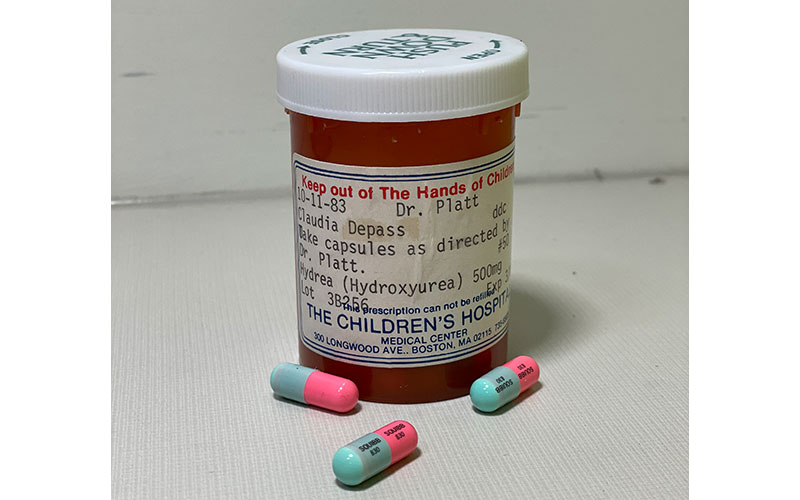P – Pill Bottle

Sickle cell disease is an inherited blood disorder. Normal red blood cells are smooth and flexible discs, like the letter O, enabling them to move easily through a person’s blood vessels. In contrast, sickle cells are stiff, sticky, and often shaped like the letter C. Sickle cells tend to cluster together and to the lining of blood vessels, making it difficult for them to move through small blood vessels. These clusters can create blockages in a child’s small blood vessels, stopping the movement of healthy, oxygen-carrying blood. This blockage decreases oxygen delivery to the tissues, which can cause pain and organ dysfunction and is what causes the majority of the complications of the disease.
The spleen, which helps filter bacterial infections from the blood and acts as the recycle center for old red blood cells, tends to destroy the misshapen sickle cells faster than normal red blood cells. Sickle cells only live for about 14 days, while normal red blood cells can live up to 120 days. This leads to a chronic lack of oxygen-carrying red cells in the blood, called anemia. Sickle cells can also damage a person’s spleen, increasing the risk of certain potentially life-threatening bacterial infections.
